Symbols of the Phases
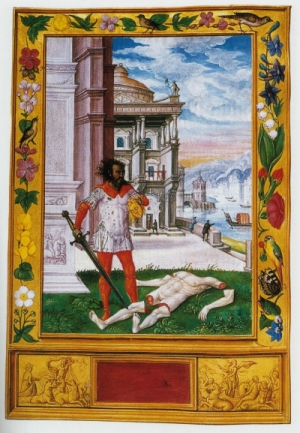
Yeats’s fascination with symbols is present throughout his poetry, and is one of the reasons why he was attracted to systems of occult meditation and magic which held that symbols had special and specific powers. The Yeatses were well aware of the power and importance of images in helping to focus the mind, having used symbols such as the Cabbalistic Tree and the Tarot in their studies with the Golden Dawn. Yet one of the potential weaknesses of their own system is the lack of emotive symbolic form, since the descriptions and explanations rely almost entirely upon words, while the majority of the symbols used are geometric abstractions.
When Michael Robartes speaks about discovering Giraldus’s Speculum Angelorum et Hominum in the introduction to AV A, he comments that ‘at the end of the book were a number of curious allegorical pictures; a woman with a stone in one hand and an arrow in the other; a man whipping his shadow; a man being torn in two by an eagle and some kind of wild beast; and so on to the number of eight and twenty’ (AV A xvii). These images derive from a series which the Yeatses attempted to construct. The images involved are neither the fundamental ones of the Zodiac, a simple animal or figure, though the wolf is close, nor even the more complex but still static style of the Tarot, though some, like the man over the pool, have some resonances. Closer are the more dynamic alchemical engravings of the sixteenth and seventeenth centuries, which sometimes share the violence that characterises certain images, and also the more specifically allegorical Renaissance ‘emblems’, though these can tend to be too literal in their iconography for ready comparison. It is also worth comparing the images with those given for the Zodiac and Mansions by Renaissance writers such as H. C. Agrippa and Giordano Bruno, which show some similar traits (see table below).
2013: The artist Jaff Seijas has created pictures for each of the symbols and I am very grateful for his permission to use some of the images here: for the full set go to jaffseijas.com/yeats.html.
| The Symbols of the Phases | ||
|---|---|---|
| 1 | naked man with out stretched hands tied to swinging branch of tree ‘obsessing figure’ not [?luminous] like tree images. Snake coiled round feet. | 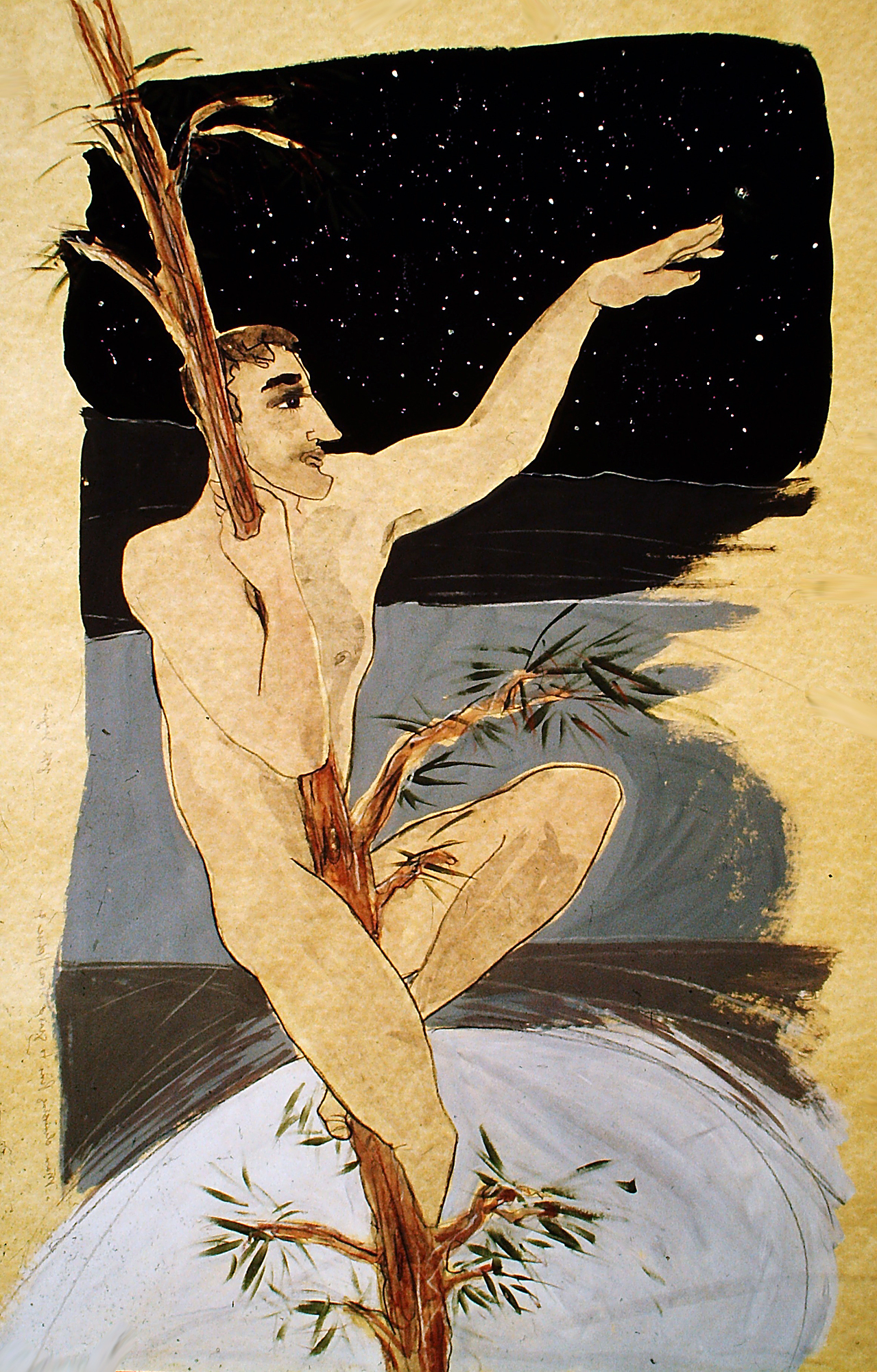 Phase 4 |
| 2 | a white bird flying with entranced limp leopard in beak — bird not 1/6 of leopard in size | |
| 3 | Eagle over sea with one foot caught in back of sea lion one foot caught by Dolphin. Eagle drags both | |
| 4 | figure climbing pine to grasp stars | |
| 5 | man making chain, or putting it on another | 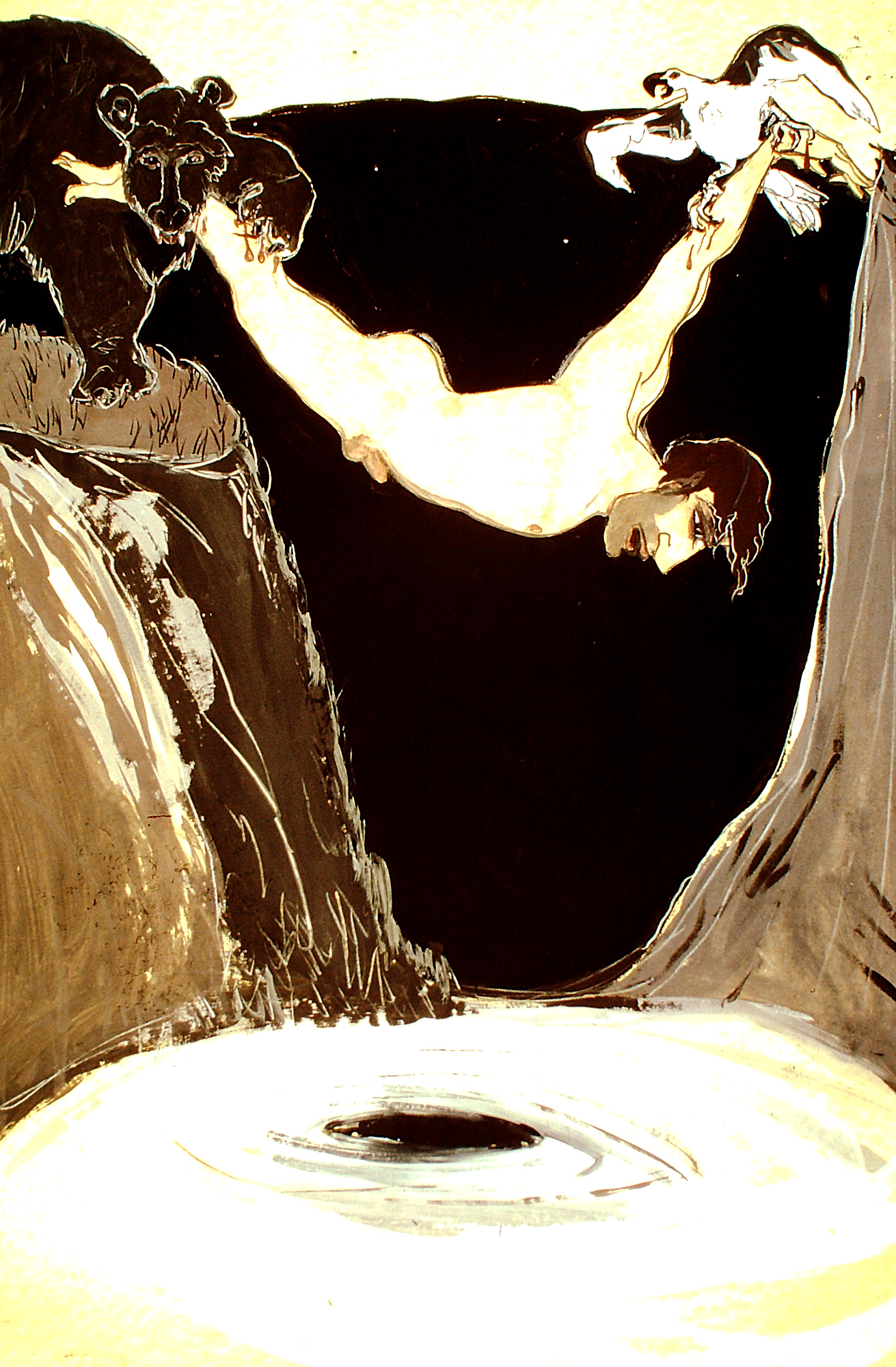 Phase 8 |
| 6 | savage putting nails into idol | |
| 7 | satyr (goat leggs) followed own image or mask | |
| 8 | a man across abyss hands in beak of bird of prey feet in mouth of bear. water below. | |
| 9 | leopard. Eagle on head plucking out eyes. |  Phase 12 |
| 10 | a man with mouth forced open [by gag and tongue torn out] | |
| 11 | a sword cleaving through skull | |
| 12 | [sword cutting hand in two] | |
| 13 | man hanging over pool |  Phase 16 |
| 14 | leopard springing | |
| 15 | man with arrow & stone one in each hand | |
| 16 | dark circle with hand | |
| 17 | crystal arrow & crescent |  Phase 20 |
| 18 | Two faced figure | |
| 19 | Wolf | |
| 20 | White bird torn in half by wolf & leopard? | |
| 21 | Man & statue | 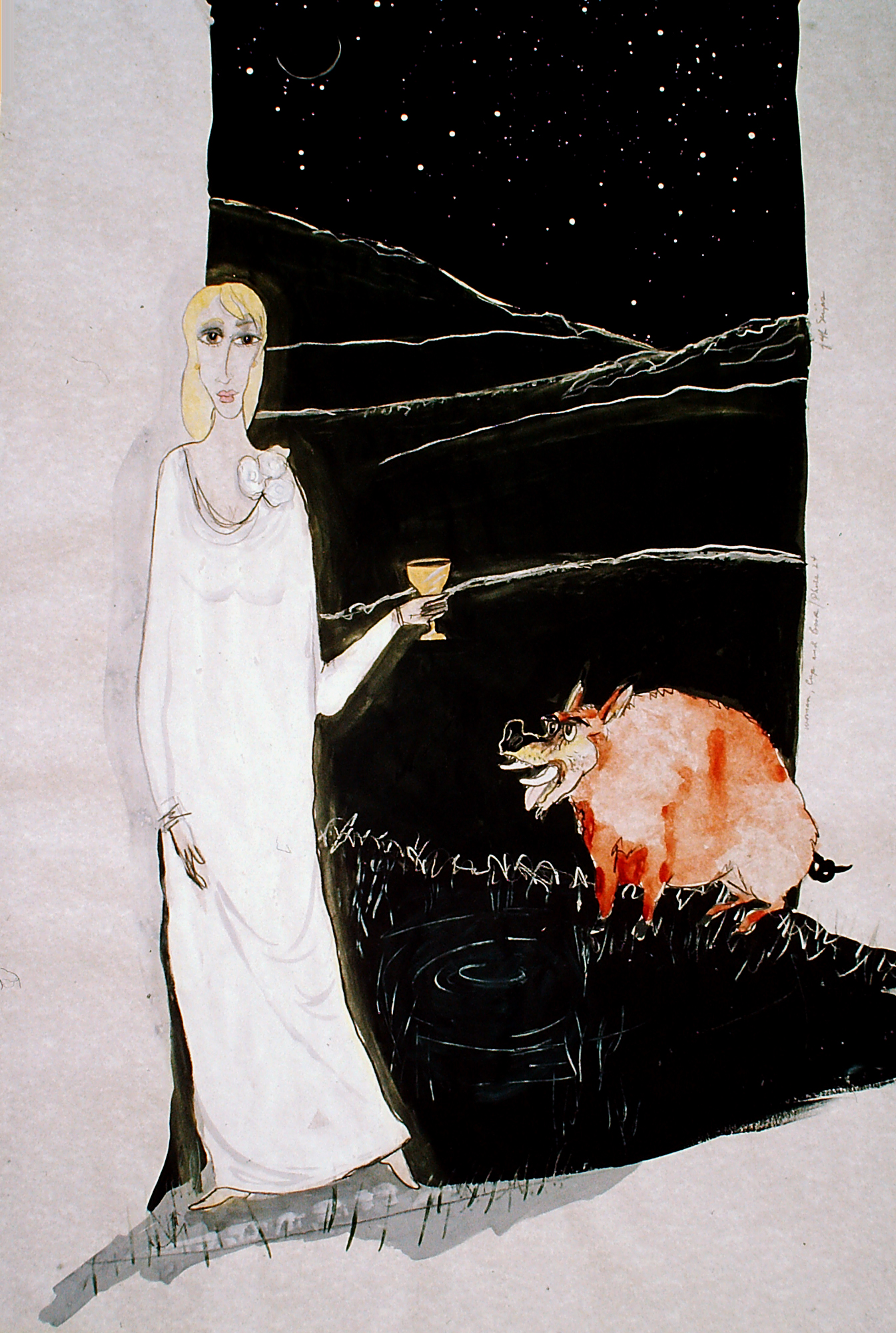 Phase 24 |
| 22 | Man beating self with flail | |
| 23 | blind folded man ballanced on point of pike & juggling | |
| 24 | woman, cup & boar | |
| 25 | [vast figure of god with small human figure flicking before his face] | 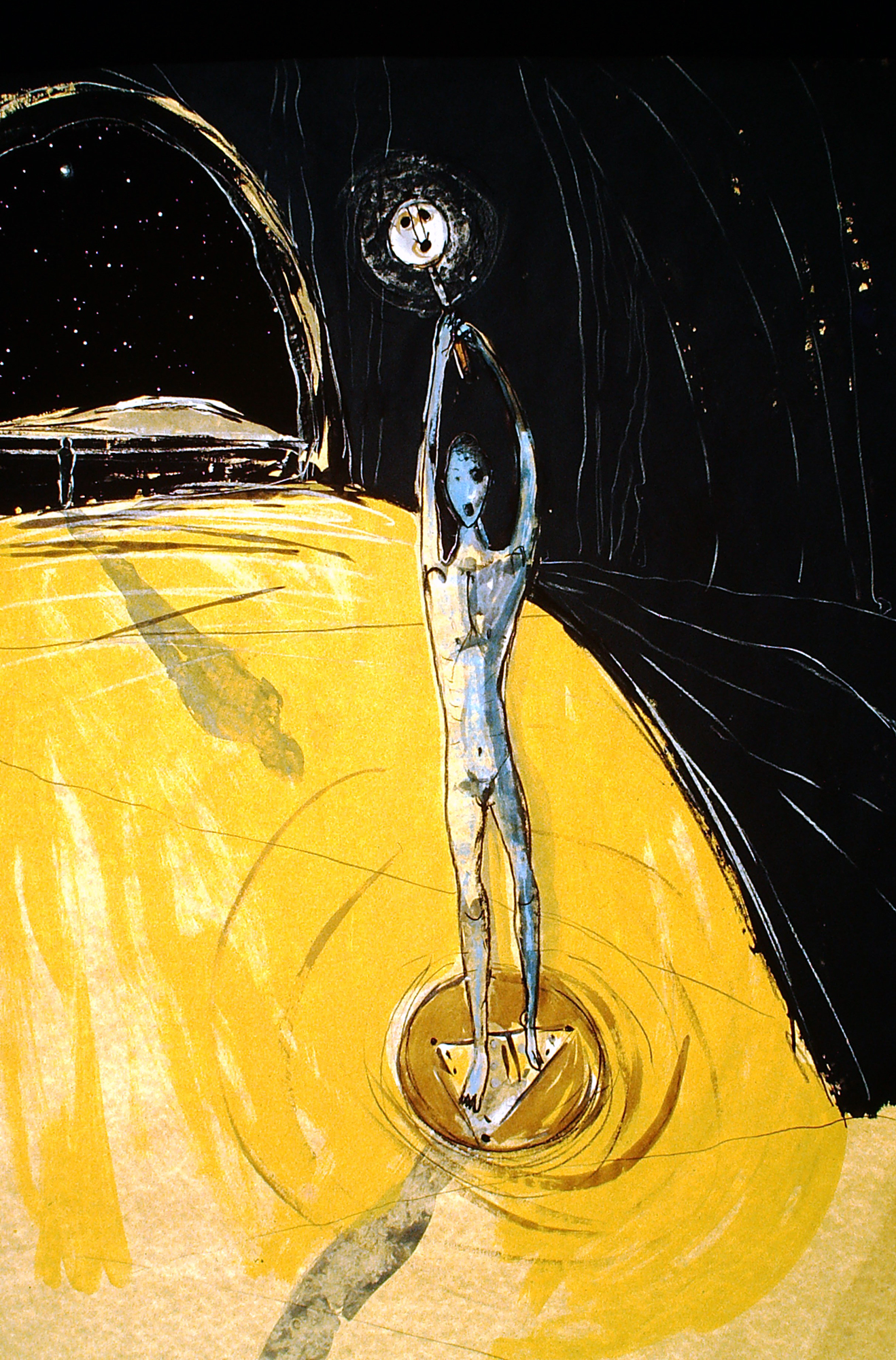 Phase 28 |
| 26 | Hunch back fighting his shadow on ground which bleeds | |
| 27 | more or less [?easter] figure | |
| 28 | a shrunken faceless man whirling a rattle | |
| from YVP 3 400-01 (see also MYV 2 400-04). | ||
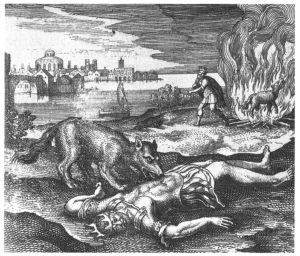
Top: Splendor Solis, The Sixth Parable (see Yeats’s story Rosa Alchemica).
Bottom: Atalanta Fugiens, Emblema XXIV, Regem lupus voravit & vitae crematus reddidit
close this window
The following images, often identical, are given by Agrippa and Bruno for the Mansions of the Moon, and those offered for the 36 decans of the Zodiac are of a similar type. See Three Books of Occult Philosophy, Book II, Chapter 46 (link to another web-site for the full text of J. F.’s English translation of 1651)and Ars Memoriae where the images serve as mnemonics for the Lullian combinations ‘Se’-‘Zo’ (the Latin text from the same web-site). Agrippa tells of how the talismans used to be made when the Moon was in a particular Mansion, with appropriate materials and perfumes, and with the following images.
| The Images of the Mansions of the Moon: Agrippa and Bruno | |||
|---|---|---|---|
| Mansion | Agrippa: Occult Philosophy, 1533 | Bruno: Ars Memoriae, 1582 | |
| Talisman for | with image of | Mnemonic image | |
| 1 | the destruction of someone | A black man in a garment made of hair, and girdled round, casting a small lance with his right hand | An Ethiopian in an iron chair, belted with a cord, throwing a dart |
| 2 | reconciliation with a prince | A king crowned | An enthroned king, lifting a prostrate man with his sceptre |
| 3 | happy fortune and every good thing | A woman well clothed, sitting in a chair, her right hand being lifted up on her head | A well-dressed woman, sitting in a chair, her left hand raised over her head, while her left hand is twisted in the hair of a fleeing idiot woman |
| 4 | revenge, separation, enmity & ill will | A soldier on a horse, holding a serpent in his right hand | A soldier sitting on a horse, holding a snake in his right hand and leading a black dog with his left |
| 5 | the favour of kings and officers | The head of a man | A prince on a silver throne, holding a rod in his right hand and embracing a girl with his left |
| 6 | to procure love betwixt two | two images embracing one another | Two armed men with bare heads and discarded swords embrace one another |
| 7 | to obtain every good thing | A man well clothed, holding his hands up to heaven as it were praying and supplicating | A well-dressed man in a silver chair, holding both hands up towards the skies in supplication |
| 8 | victory in war | an eagle having the face of a man | A man riding an eagle, with a palm in his right hand, followed by two captives |
| 9 | to cause infirmities | The image of a man wanting his privy parts, shutting his eyes with his hands | A eunuch with his hands over his eyes, in front of a dirty bed |
| 10 | to facilitate child-bearing | The head of a lion | A woman giving birth, and in front of her a golden lion and man appearing as a convalescent |
| 11 | fear, reverence and worship | A man riding a lion, holding the ear thereof in his left hand, and in his right, holding forth a bracelet of gold | A man riding a lion, holding its mane in his left hand and a small lance in his right |
| 12 | the separation of lovers | A dragon fighting with a man | In a leaden, black seat, a dragon fighting with a man |
| 13 | the agreement of married couples and for dissolving charms against copulation | images of man in red wax and woman in white wax embracing | A stallion serving a mare, while a shepherd leaning on his staff, his head resting on both hands, looking on with a fixed expression |
| 14 | divorce and separation of the man from the woman | A dog biting his tail | A man holding a dog suspended by its tail, with the dog biting its own hind foot |
| 15 | friendship and goodwill | A man sitting and inditing letters | A man seated reading, flattering a messenger |
| 16 | much merchandising | A man sitting on a chair, holding a balance in his hands | A merchant holding silver scales in his hand, another counting money out to him |
| 17 | against thieves and robbers | An ape | A man carrying a chest, followed by an ape |
| 18 | against fevers and pains of the belly | A snake holding his tail above his head | A man with a golden snake in his hand, which many serpents flee from |
| 19 | facilitating birth and provoking the menstrues | A woman holding her hands upon her face | A woman in childbirth with her hands over her face |
| 20 | hunting | Sagittary, half a man and half an horse | A hunting centaur, with a quiver on his back and a bow in his left hand, with a dead fox in his right hand. |
| 21 | the destruction of somebody | A man with a double countenance, before and behind | Two men, one with his back turned, the other looking forwards and gathering up his shaven hair nearby |
| 22 | the security of [i.e. to catch] runaways | A man with wings on his feet, bearing an helmet on his head | A helmeted man, flying with winged feet, returns safely |
| 23 | destruction and wasting | A cat having a dog’s head | A cat with a dog’s head, or a dog with the back of a cat, digging up the ground, and a man falling to the ground |
| 24 | the multiplying of herds of cattle | A woman giving suck to her son | A woman feeding her son, who has seized horn of a ram, which a large flock follows |
| 25 | the preservation of trees and harvests | A man planting | A man planting a fig-tree and another sowing corn |
| 26 | love and favour | A woman washing and combing her hairs | A woman combing her washed hair, with a winged boy in front of her |
| 27 | to destroy fountains, pits, medicinal waters and baths | A man winged, holding in his hand an empty vessel, and perforated | A winged man lowering an empty, holed flaggon into a well |
| 28 | to gather fishes together | A fish | A man throwing a golden fish into the water, so that many living fishes swim to it |
Such comparisons show some similarities, but ultimately, more than anything else, they show the difference of the Yeatses’ symbols.